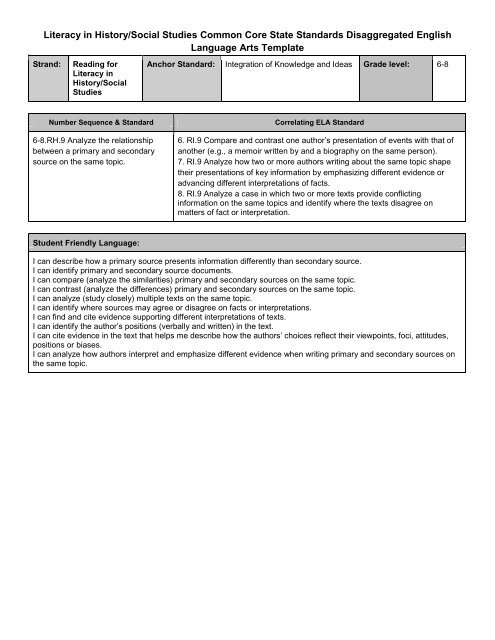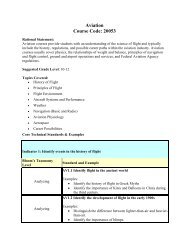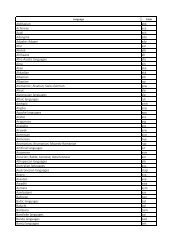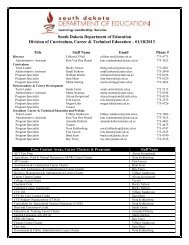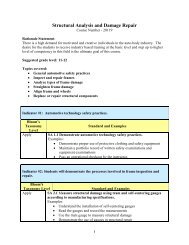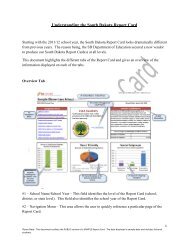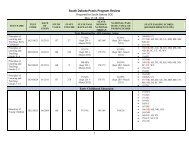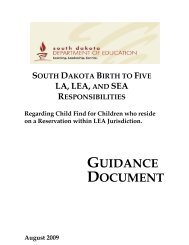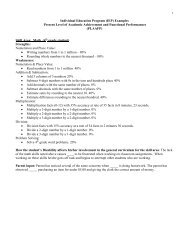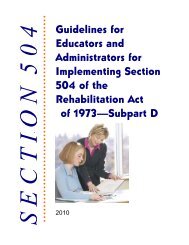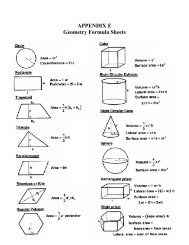Literacy in History/Social Studies Common Core State Standards ...
Literacy in History/Social Studies Common Core State Standards ...
Literacy in History/Social Studies Common Core State Standards ...
You also want an ePaper? Increase the reach of your titles
YUMPU automatically turns print PDFs into web optimized ePapers that Google loves.
<strong>Literacy</strong> <strong>in</strong> <strong>History</strong>/<strong>Social</strong> <strong>Studies</strong> <strong>Common</strong> <strong>Core</strong> <strong>State</strong> <strong>Standards</strong> Disaggregated English<br />
Language Arts Template<br />
Strand:<br />
Read<strong>in</strong>g for<br />
<strong>Literacy</strong> <strong>in</strong><br />
<strong>History</strong>/<strong>Social</strong><br />
<strong>Studies</strong><br />
Anchor Standard: Integration of Knowledge and Ideas Grade level: 6-8<br />
Number Sequence & Standard<br />
6-8.RH.9 Analyze the relationship<br />
between a primary and secondary<br />
source on the same topic.<br />
Correlat<strong>in</strong>g ELA Standard<br />
6. RI.9 Compare and contrast one author’s presentation of events with that of<br />
another (e.g., a memoir written by and a biography on the same person).<br />
7. RI.9 Analyze how two or more authors writ<strong>in</strong>g about the same topic shape<br />
their presentations of key <strong>in</strong>formation by emphasiz<strong>in</strong>g different evidence or<br />
advanc<strong>in</strong>g different <strong>in</strong>terpretations of facts.<br />
8. RI.9 Analyze a case <strong>in</strong> which two or more texts provide conflict<strong>in</strong>g<br />
<strong>in</strong>formation on the same topics and identify where the texts disagree on<br />
matters of fact or <strong>in</strong>terpretation.<br />
Student Friendly Language:<br />
I can describe how a primary source presents <strong>in</strong>formation differently than secondary source.<br />
I can identify primary and secondary source documents.<br />
I can compare (analyze the similarities) primary and secondary sources on the same topic.<br />
I can contrast (analyze the differences) primary and secondary sources on the same topic.<br />
I can analyze (study closely) multiple texts on the same topic.<br />
I can identify where sources may agree or disagree on facts or <strong>in</strong>terpretations.<br />
I can f<strong>in</strong>d and cite evidence support<strong>in</strong>g different <strong>in</strong>terpretations of texts.<br />
I can identify the author’s positions (verbally and written) <strong>in</strong> the text.<br />
I can cite evidence <strong>in</strong> the text that helps me describe how the authors’ choices reflect their viewpo<strong>in</strong>ts, foci, attitudes,<br />
positions or biases.<br />
I can analyze how authors <strong>in</strong>terpret and emphasize different evidence when writ<strong>in</strong>g primary and secondary sources on<br />
the same topic.


